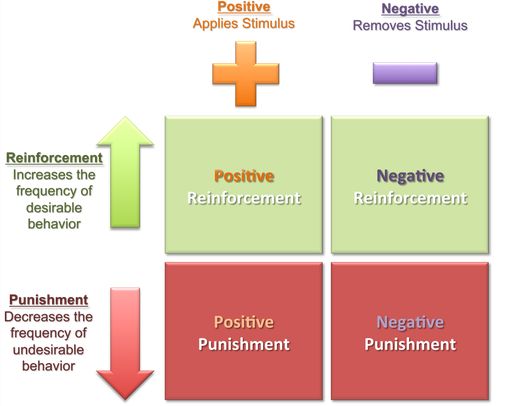- Disadvantages Of Negative Reinforcement In The Classroom
- Negative Reinforcement In The Classroom Examples
- An Example Of A Negative Reinforcement
Both positive and negative reinforcement are effective ways of strengthening desirable behavior in children when used correctly. Negative reinforcement tends to be effective in the short-term, however research tends to suggest that positive reinforcement is a better long-term strategy for younger children. Negative reinforcement: Negative reinforcement is a concept within operant conditioning and is a means of shaping behavior. Negative reinforcement refers to the removal of a negative stimulus in. Somewhat hard to define, negative reinforcement is attached to a definitively negative connotation. However, that is because it is often confused with punishment or being overly critical. The goal of negative reinforcement 'allows the teacher to avoid or terminate an unpleasant situation if the behavioral goal is achieved'(Wolfgang, p21).

- Extinction refers to a procedure used in Applied Behavioral Analysis (ABA) in which reinforcement that is provided for problem behavior (often unintentionally) is discontinued in order to decrease or eliminate occurrences of these types of negative (or problem) behaviors.
- What is Negative Reinforcement? Positive reinforcement focuses on granting a favorable stimulus in order to receive the desired response. For instance, a child is permitted to watch television, after he is done with all his homework and chores.
Copy Citation

Export Citation
Disadvantages Of Negative Reinforcement In The Classroom
Purchase a PDF
How does it work?
- Select the purchase option.
- Check out using a credit card or bank account with PayPal.
- Read your article online and download the PDF from your email or your account.
- Access supplemental materials and multimedia.
- Unlimited access to purchased articles.
- Ability to save and export citations.
- Custom alerts when new content is added.
The Clearing House is a must-have for middle school and high school teachers and administrators. Focusing on the 'how to' aspect of teaching, the journal offers informative and practical articles on teaching techniques, administrative procedures, school programs, and professional development. Theoretical articles, comparative education pieces, and in-depth examinations of major educational issues also appear. Recent topics include the No Child Left Behind Act, homeschooling, classroom management, teacher performance assessment, mentoring, drug sweeps in school, and distance education.
Building on two centuries' experience, Taylor & Francis has grown rapidlyover the last two decades to become a leading international academic publisher.The Group publishes over 800 journals and over 1,800 new books each year, coveringa wide variety of subject areas and incorporating the journal imprints of Routledge,Carfax, Spon Press, Psychology Press, Martin Dunitz, and Taylor & Francis.Taylor & Francis is fully committed to the publication and dissemination of scholarly information of the highest quality, and today this remains the primary goal.

Negative Reinforcement In The Classroom Examples
An Example Of A Negative Reinforcement
This item is part of a JSTOR Collection.
For terms and use, please refer to our Terms and Conditions
The Clearing House © 1982 Taylor & Francis, Ltd.
Request Permissions